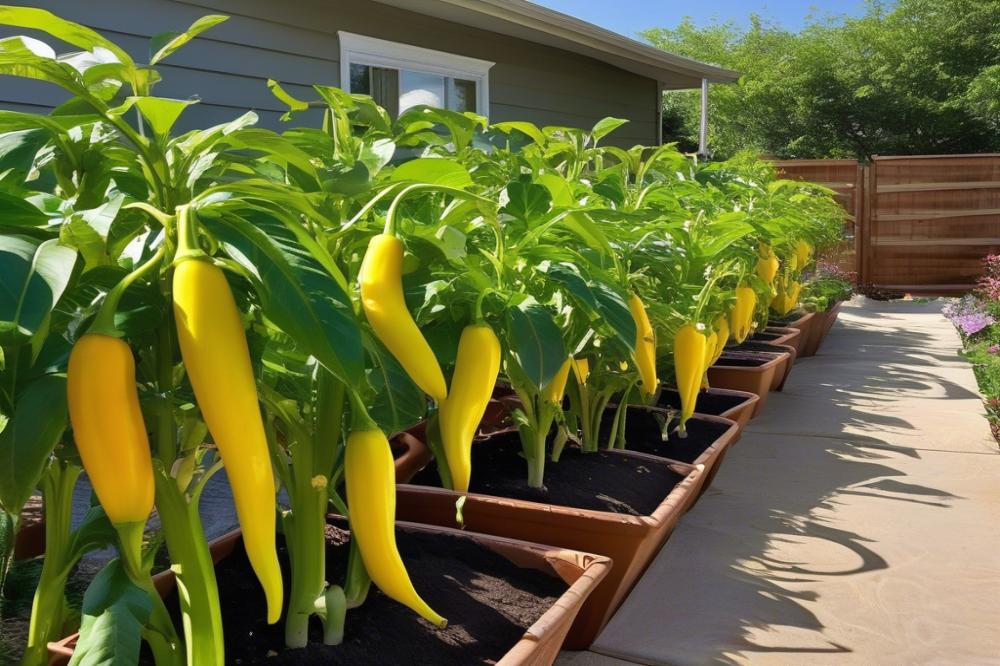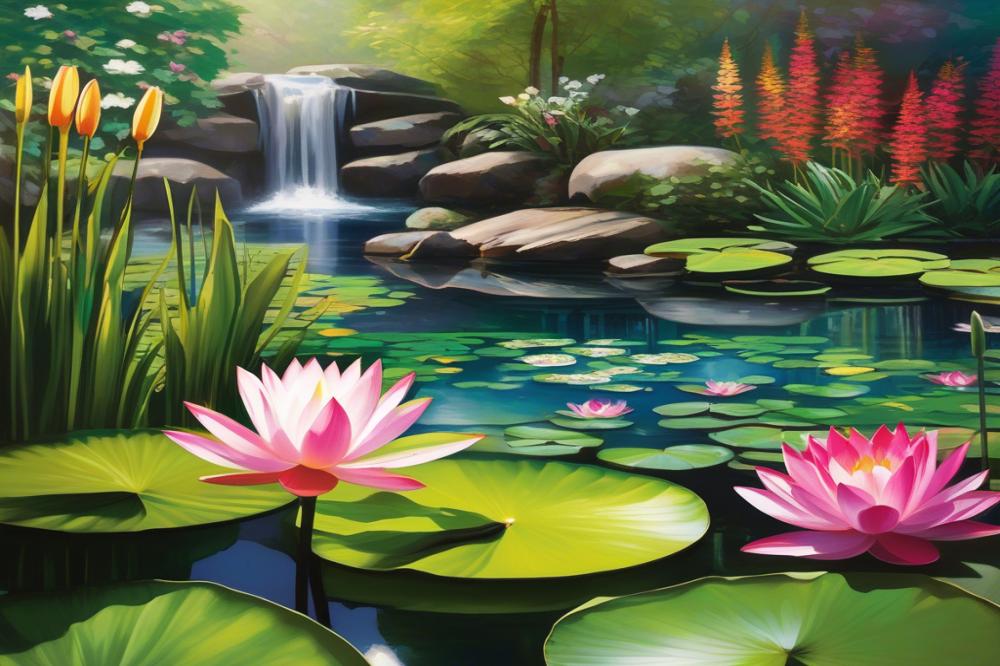growing banana peppers in Containers or garden beds
Banana peppers are popular for their mild heat and vibrant yellow color. Often used in salads or pickled, these peppers add a delightful crunch to various dishes. They fall under the category of sweet pepper varieties, making them a favorite among those who enjoy flavorful yet non-spicy options.
The beauty of container gardening makes it possible for anyone to grow these peppers, regardless of space constraints. garden beds also offer a fantastic environment for planting banana peppers, allowing for improved drainage and accessibility. Eager gardeners can create lush, productive spaces in small backyards or even on patios.
For individuals interested in chili plants, banana peppers serve as an excellent starting point. Their approachable heat level attracts many novice gardeners who want to experience the joy of vegetable gardening. With proper banana pepper care, anyone can enjoy a bountiful harvest from their efforts.
When deciding where to plant, a sunny location is crucial. These peppers thrive in full sunlight, needing six to eight hours of direct light daily. Soil requirements include well-draining and fertile soil, rich in organic matter for optimal growth. Additionally, understanding the watering needs of banana peppers cannot be overlooked. Consistent moisture is vital, although the soil should not remain soaked.
Companion planting can enhance growth and deter pests. By selecting the right nearby plants, gardeners can create a balanced ecosystem. Overall, harvesting banana peppers becomes a rewarding experience when the proper steps are followed. With some attention and care, anyone can succeed in cultivating their own banana pepper plants.
growing banana peppers: Basics


Description and Characteristics of Banana Peppers
Banana peppers, often recognized by their bright yellow color, are a sweet to mildly spicy pepper variety. Their elongated shape resembles a banana, which is how they earned their name. These peppers can range from 5 to 7 inches in length. The flavor profile can vary, but they generally offer a tangy taste that enhances various dishes. Harvesting banana peppers at the right time is essential. They are usually ready to pick when they reach a yellow or light green hue.
Ideal Conditions for Growing Banana Peppers
Successful planting banana peppers requires specific environmental factors. A sunny location is vital. These plants thrive in temperatures between 70°F to 85°F. Soil requirements are also important. Well-draining soil that is rich in organic matter provides a perfect foundation. Regular watering banana peppers ensures they receive the moisture needed for growth. However, be cautious of over-watering, which can lead to root rot.
Overview of Pepper Varieties Suitable for Cultivation
Several pepper varieties are good choices for cultivation. Sweet banana peppers are popular and easy to grow. If you prefer a bit of heat, consider the hot banana pepper. This variety can provide a spicy kick to your meals. Other options can also include hybrid varieties known for their disease resistance. These peppers perform well in both container gardening and garden beds. Companion planting with certain herbs, such as basil or cilantro, can enhance the growth of your peppers. Each variety may have its own unique growing tips which can help maximize your vegetable gardening experience.
Planning Your Garden


Choosing Between Containers or Garden Beds
Selecting a growing method is an important step. Container gardening offers flexibility and mobility, while garden beds often provide more space for roots to thrive. Consider the climate of your location when making a choice. If the area is prone to heavy winds or rain, using containers can offer more protection. A sunny location is fundamental for both methods, as banana peppers require sunlight to flourish. Analyze your available space and decide what will work best for you.
Selecting the Right Size and Type of Container
When container gardening, the size of your pots is crucial. Banana peppers grow best in containers that are at least 5 gallons. This size allows enough room for root expansion and nutrient uptake. Choose containers made from materials like clay, plastic, or wood. Each type has its benefits and drawbacks. For instance, clay pots are attractive but can dry out quickly. Ensure adequate drainage holes are present. Good soil is also essential for successful planting banana peppers. Use a high-quality potting mix enriched with organic matter.
Factors to Consider When Preparing Garden Beds
Preparing garden beds requires attention to detail. Start by testing the soil for pH and nutrient levels. Banana peppers prefer well-draining, nutrient-rich soil with a pH between 6.0 and 6.8. Clear the area of weeds and debris before planting. Consider companion planting with other pepper varieties or vegetables that enhance growth. Watering banana peppers consistently is key, especially during dry spells. Spacing between plants is also important. Maintain at least 18 to 24 inches between each to encourage air circulation. Taking these factors into account will help create the healthiest environment for your plants.
Soil Requirements for Banana Peppers


When planting banana peppers, the right soil is crucial. A well-draining soil that retains some moisture is ideal. This type of soil provides a balance that encourages healthy growth. Most pepper varieties thrive in soils with a pH level between 6.0 and 6.8. Testing the soil can inform you of its current pH and composition.
Nutrients play a vital role in the development of banana peppers. Essential elements like nitrogen, phosphorus, and potassium contribute to healthy leaves, strong root systems, and flavorful fruits. Organic matter, such as compost, can enhance the nutrient profile. Adding fertilizers specifically designed for vegetable gardening may also help boost plant health.
Amending the soil prior to planting can yield better results. Mixing in organic compost or well-rotted manure increases nutrient availability. Consider using mulch as well; it helps retain moisture and suppress weeds. In container gardening, a potting mix designed for vegetables can be used. When utilizing garden beds, mixing different organic materials can improve soil structure and fertility.
Watering banana peppers correctly is another important factor. Proper moisture levels support growth without causing root rot. Companion planting can also play a role. Certain plants may enhance the growth and flavor of your banana peppers. Keep these factors in mind for a rewarding gardening experience.
Planting Banana Peppers


Timing and Seasonal Considerations
Planting banana peppers requires attention to timing. Choose a warm season, as these peppers thrive in hot weather. Wait until after the last frost date in your area. Typically, this falls in spring, but check local gardening advice for precision. In colder regions, starting seeds indoors may be beneficial. A sunny location is essential for healthy growth, so consider where you place your plants.
How to Start Seeds Indoors vs Direct Sowing
There are two main methods for planting banana peppers: starting seeds indoors or direct sowing. Starting seeds indoors offers an early start. Use seed trays filled with quality seed-starting mix. Place them in a warm, bright area and keep the soil consistently moist. Once seedlings develop strong leaves and weather is warm enough, transplant them outdoors. Alternatively, direct sowing can be done when soil temperatures reach at least 70°F. Planting seeds directly in garden beds or containers is simpler but requires a bit of patience.
Soil Preparation and Planting Techniques
Soil preparation greatly impacts growth. Mix the existing soil in garden beds with organic compost and well-rotted manure. This enhances the soil structure, improving moisture retention and providing nutrients. During planting, create holes that are about an inch deep. Space seedlings or seeds around 12-18 inches apart to allow for growth and airflow. Watering banana peppers right after planting ensures proper settling. If you choose container gardening, select pots that are at least 5 gallons in size for adequate root space. Consider companion planting. Neighboring plants can aid in pest control and improve yield.
Caring for Your Banana Peppers
Watering Banana Peppers: Frequency and Amounts
Watering banana peppers is crucial for their growth. Regular hydration is essential, especially during hot weather. Most gardeners recommend watering deeply at least once a week. This practice allows roots to absorb moisture effectively. Container gardening often requires more frequent watering due to limited soil. Look for drooping leaves or dry soil to signal it’s time to add water. Avoid waterlogging the plants. Too much moisture can lead to root rot. Always check the top inch of the soil first. If it feels dry, that’s when you should water again.
Importance of Sunlight and Selecting a Sunny Location
Banana peppers thrive in bright sunlight. Choosing the right spot can make a big difference. A sunny location should ideally receive at least six hours of direct sun each day. This helps in producing vibrant, flavorful fruits. If planting banana peppers in garden beds, inspect the area for any shade from trees or buildings. Sunlight nourishes the plants and boosts their growth. Remember, inadequate light can stunt their development and yield. For optimal results, think about surrounding them with companion planting enthusiasts like basil or marigolds to enhance their growth.
Fertilization and Nutrition Needs
Proper fertilization is vital for healthy banana peppers. Choose a balanced fertilizer to ensure the plants receive necessary nutrients. An N-P-K (nitrogen, phosphorus, potassium) ratio of about 5-10-10 works well as the peppers establish. Apply the fertilizer every four to six weeks during the growing season. As they grow, monitor their growth for signs of deficiency. Look for yellowing leaves or stunted growth. These indicate that they may need more nutrients. Soil requirements are also key; rich, well-draining soil promotes healthy root systems. Regularly incorporate organic compost into the soil for added nutrition.
Companion Planting with Banana Peppers
Benefits of Companion Planting
Companion planting offers many advantages in both container gardening and garden beds. This method helps to maximize space and resources. Additionally, certain plants improve growth by attracting beneficial insects. Some can provide shade or support for taller plants, while others may deter pests. Enriching the soil can also occur when planting banana peppers with compatible partners.
Recommended Companion Plants for Banana Peppers
Selecting the right companions can boost your pepper varieties. Marigolds are a great choice, as they repel harmful insects. Basil is another excellent partner; it enhances the flavor of peppers and keeps pests away. Planting onions near banana peppers can help reduce aphid problems. Spinach and other leafy greens thrive alongside peppers, making them good garden buddies.
Plants to Avoid Near Banana Peppers
Some plants do not mix well with banana peppers. Fennel often stunts growth and should be placed far away. Cucumbers may compete for nutrients and water, creating stress for both. It’s best to keep potatoes at a distance as they can attract the same pests. Avoid planting peppers near other nightshades like tomatoes, since this can increase disease risks. Understanding these relationships will make your vegetable gardening experience more successful.
Harvesting Banana Peppers
Signs of Ripeness and Optimal Harvesting Time
Determining when to harvest banana peppers is crucial. The peppers typically change from green to yellow or orange as they ripen. Look for a firm texture; they should feel solid and not overly soft. Most varieties of banana peppers can be harvested while still green. Many gardeners prefer them at this stage for their milder flavor. A sunny location and proper care will help accelerate ripening, so keep an eye on them as they mature. Aim to harvest before the skin shows any wrinkles.
How to Properly Harvest Banana Peppers
Using sharp garden shears is a good way to cut the peppers from the plant. Grasp the base of the pepper and make a clean cut. Avoid pulling the peppers off as this might damage the plant. Harvesting in the morning can be beneficial. This time tends to be cooler, and peppers may hold more moisture. Handle each pepper with care to prevent bruising or other damage. Always wear gloves if you have sensitive skin because some peppers can irritate.
Post-Harvest Care and Storage
After harvesting banana peppers, wash them gently under cool water. This removes any dirt or residues. Dry them using a clean towel or let them air dry. Store peppers in a cool, dry place or in the refrigerator. Using a perforated plastic bag can help maintain freshness while allowing airflow. If you have an abundant harvest, consider freezing some for later use. Blanching them briefly before freezing can preserve their flavor. Enjoying your hard work in vegetable gardening brings satisfaction, so take care of your produce!
Wrapping Up Your Journey with Banana Peppers
Growing banana peppers offers a rewarding experience for both beginners and seasoned gardeners. A few essential points stand out. First, cultivating these peppers in either container gardening or garden beds can be done with relative ease. They thrive in warm weather and well-drained soil, so choosing the right spot is key. Additionally, adequate sunlight is necessary; aim for around six hours a day for the best results. Regular watering will help keep your plants healthy, but be cautious of overwatering.
If you are hesitant about diving into vegetable gardening, remember that every journey begins with a single step. Even if challenges arise, perseverance often leads to delightful rewards. Sharing your harvest with family and friends can be a joyful experience, bringing satisfaction that extends beyond the garden itself.
In the end, cultivating these bright yellow peppers is not just about the food. It’s about the connection to nature and the pride you feel when you pick your crop. Each ripe pepper embodies the effort and care you put into your garden or containers. Happy gardening!



